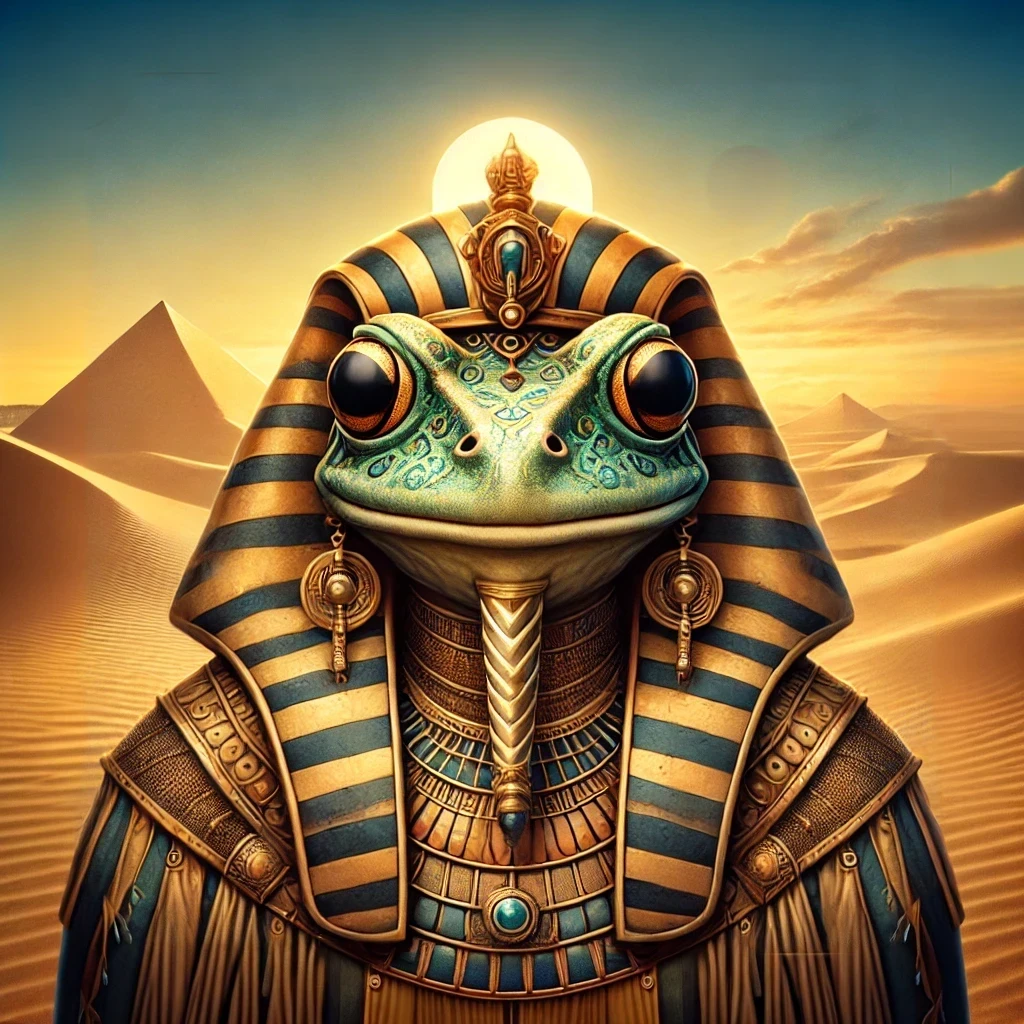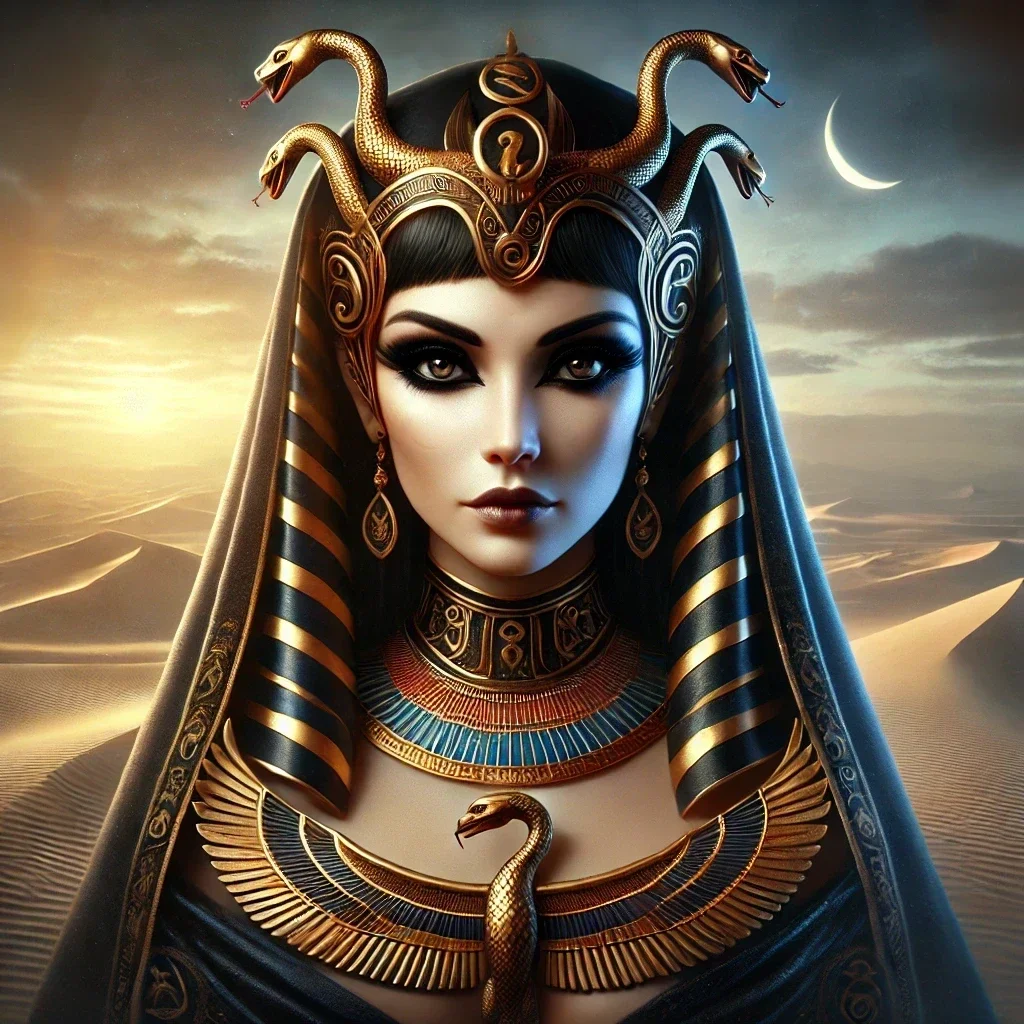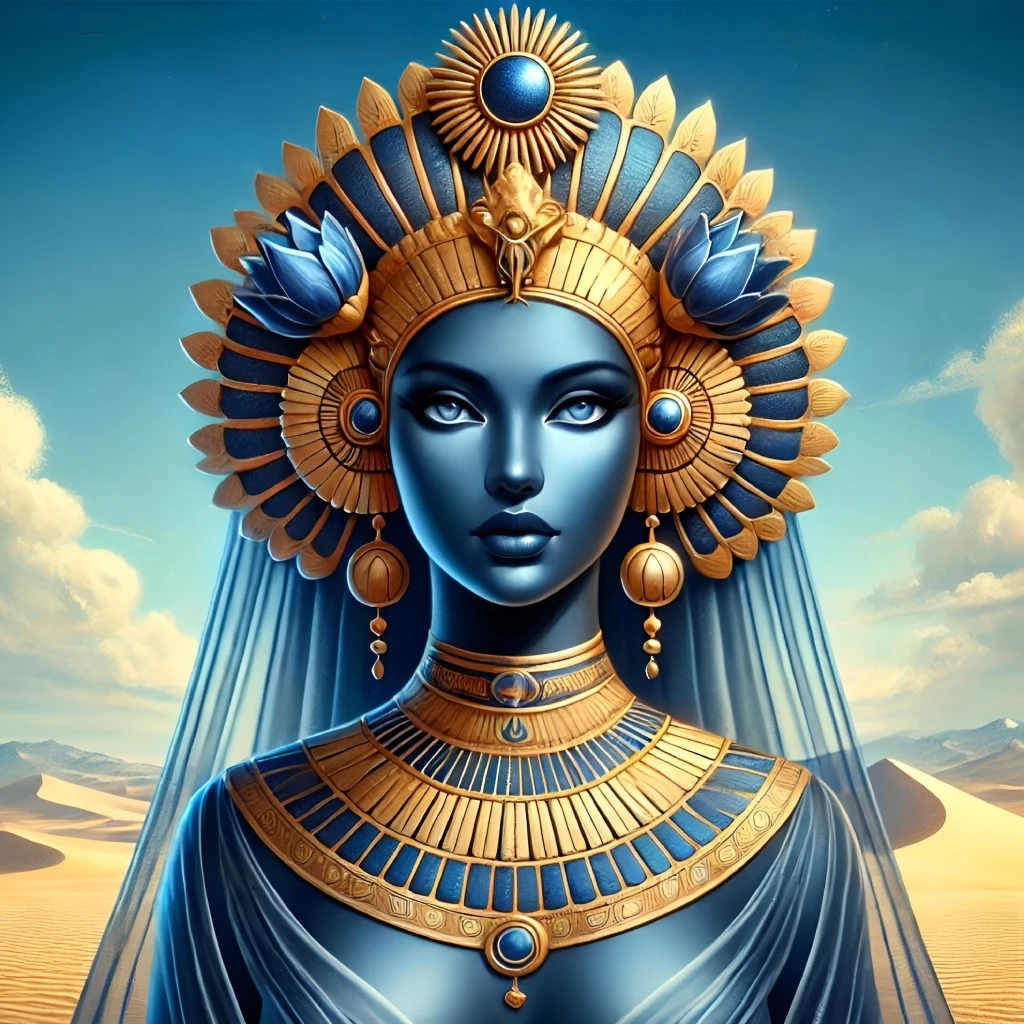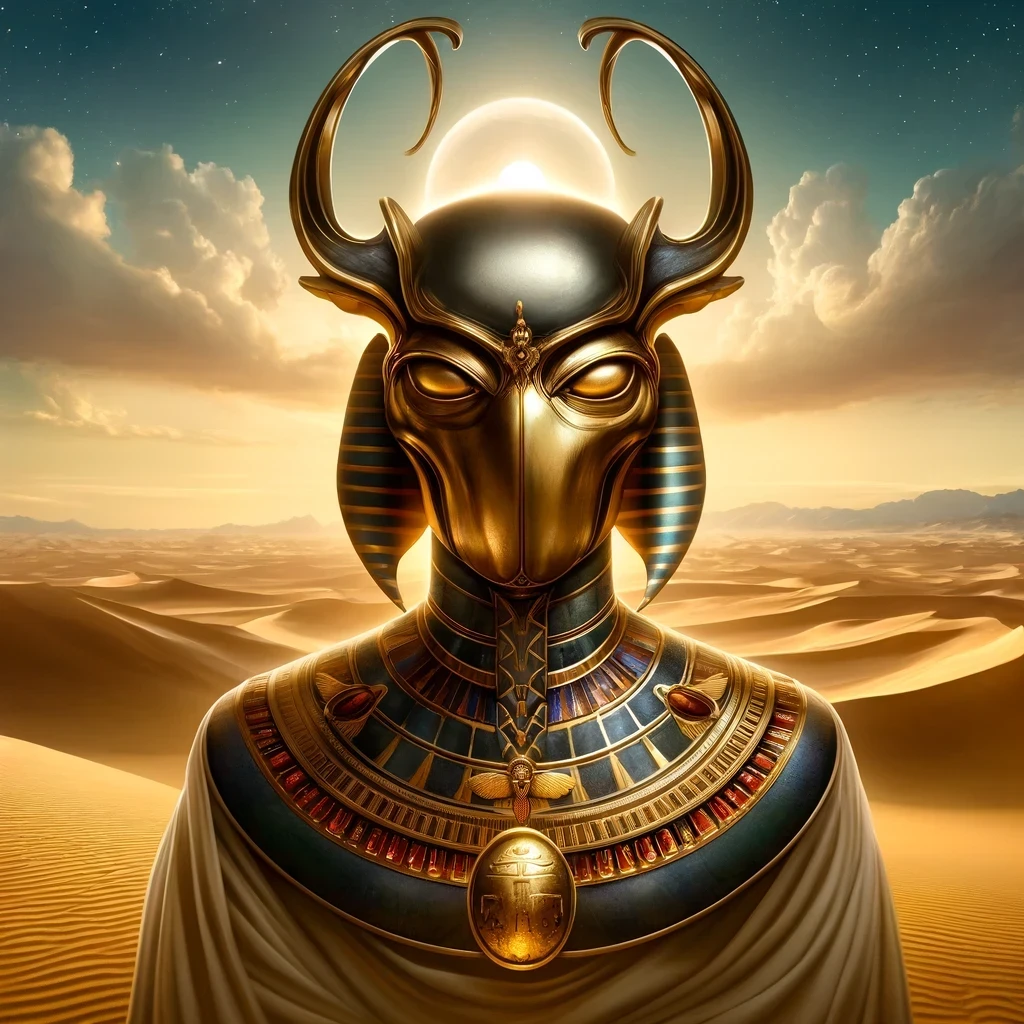The enigmatic figure of Kek, an ancient deity from Egyptian mythology, represents the primordial darkness that preceded creation. Known alternatively as Kuk or Keku, this enigmatic entity is often referred to by titles such as “Bringer of Night” or “Master of the Primordial Void.” The name “Kek” derives from the ancient Egyptian word for darkness or obscurity, reflecting his association with the chaotic state before the ordered universe came into existence.
Origins
Historical Roots
Kek originates from the Ogdoad, a group of eight deities worshipped primarily in Hermopolis. This cosmological framework divided the primordial forces into male and female pairs, with Kek and Kauket embodying the concept of darkness. Together, they personified the unseen potential of the universe before creation. The worship of this god dates back to the Old Kingdom, where his name appears in pyramid texts and ritual invocations designed to ensure a successful journey to the afterlife.
Connections to Cosmology
In Hermopolitan theology, Kek and his consort symbolized the liminal space between chaos and creation. This role underscores the deity’s importance in bridging the void to allow the emergence of the ordered cosmos.
Appearance
Depictions in Art
Kek is often depicted as a man with a frog’s head, reflecting the amphibian’s connection to fertility and transformation in Egyptian culture. Occasionally, he appears as a fully anthropomorphic figure adorned with symbols of darkness, such as a shroud or a black sun disc.
Variations Across Periods
In later periods, his iconography became more abstract, sometimes represented by hieroglyphs or patterns symbolizing shadow and the unknown. These adaptations reflect a gradual shift from physical depictions to more conceptual representations.
Abilities
Power Over Darkness
As a personification of darkness, the deity wielded control over the shadows, symbolizing both concealment and the potential for revelation. His dominion extended over the chaotic void, making him an essential force in the cycle of creation and destruction.
Facilitator of Transformation
Kek was believed to possess transformative abilities, aligning him with processes of birth and renewal. This aspect tied him to both the physical and metaphysical realms, acting as a conduit for divine energy.
Myths
Role in Creation Myths
In Egyptian creation stories, Kek played a pivotal role as one of the eight primordial deities. Alongside his consort, he prepared the cosmos for the emergence of Ra, the sun god, by holding back the void and ensuring the orderly rise of light from darkness.
Associations with Time
Some accounts link him to the cyclical nature of time, particularly the transition between night and day. This connection emphasizes his role in maintaining cosmic balance.
Symbolism
Darkness and Potential
Kek embodies the fertile potential hidden within darkness. This dual symbolism of concealment and opportunity made him a figure of reverence and caution.
Sacred Animals and Objects
The frog, a symbol of metamorphosis and fertility, is closely associated with Kek. He is also linked to the color black and objects like obsidian, which reflect his mysterious nature.
Plants and Minerals
Certain plants, such as lotus flowers that bloom in the dark, were sacred to Kek. These botanical symbols reinforce his connection to life emerging from obscurity.
Relationships
Consort: Kauket
Kek’s consort, Kauket, personified the feminine aspect of darkness. Together, they represented a harmonious duality necessary for cosmic balance.
Connections to Ra
As a precursor to the dawn, the deity shares a conceptual relationship with Ra, the sun god. While the two deities represent opposite forces, their interplay highlights the dynamic nature of Egyptian cosmology.
Rivalries and Neutral Roles
Unlike many deities in Egyptian mythology, Kek is not commonly associated with direct rivalries or conflicts. His role remains neutral, emphasizing balance rather than opposition.
Trivia
- Kek’s association with frogs later influenced depictions of Heket, the goddess of childbirth.
- Some Egyptian texts describe the god as a guardian of secret knowledge, hidden within the primordial void.
- The deity’s name appears in cryptographic texts, where his symbolic use underscores the interplay between light and shadow.
- His modern association with internet culture stems from a misinterpretation of ancient iconography, blending Egyptian and contemporary memes.
- Artifacts depicting Kek are rare, as his worship focused more on conceptual rituals than material representations.



